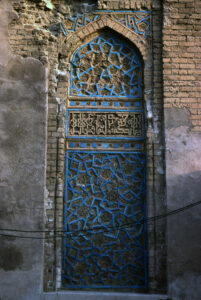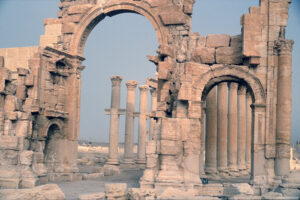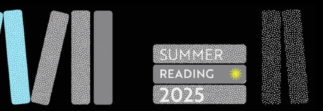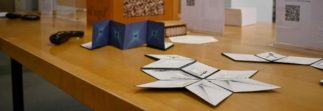
Mashhad al-Imam Yahya ibn al-Qasim, view of an external niche decorated with blue glazed tile work, Mosul, Iraq, photo ca.1980. Yasser Tabbaa Archive.
Images of the destruction of cultural treasures in the Middle East have dominated the media: propaganda videos of extremists attacking artifacts, photos of ancient sites razed, stunning “before and after” shots of devastated cities. Sharon Smith, PhD, wants you to see the whole picture.
“There is a lot of emphasis on the current destruction, but we cannot lose sight of the importance of documenting culture and heritage on a larger scale,” says Smith, the program head for the Aga Khan Documentation Center (AKDC) at MIT.
Preserving the visual and material cultures of the Muslim world, placing them in context, and using them to facilitate teaching and research are all at the heart of the AKDC’s mission. The center, situated within the MIT Libraries, is part of the Aga Khan Program for Islamic Architecture at MIT and Harvard. Together with the Aga Khan Trust for Culture, it co-directs Archnet, the premier open access, online library of the built environment with a focus on Muslim cultures.
In 2012, the AKDC began to serve as a repository for archives from leading architects and scholars. Over the past four years, more and more institutions and individuals from the region have reached out to the AKDC to donate collections and archives threatened by destruction from civil war, looting and vandalism by militant groups, or damage simply due to lack of infrastructure.
“It’s driving us to build a more robust database,” says Smith. “Just to keep pace with the rate at which things are being destroyed.”
One of several prominent gifts the AKDC has received is from Yasser Tabbaa, a noted scholar in Islamic art and architecture, who donated his teaching collection of 35mm slides in 2015. Tabbaa’s collection documents many of the monuments damaged or destroyed in recent conflicts, including those in Iraq and Syria. His images and notes will be critical to the AKDC’s ongoing efforts to substantiate and record the loss of cultural heritage throughout the region.

The Monumental Arch of the Great Colonnade. Palmyra, Syria, photo ca. 1980s-1990s. Yasser Tabbaa Archive.
For Smith, as important as ensuring open access to these collections in peril is providing “an academic voice” around them — presenting them with historic, cultural, and geographic specificity. Archnet, which originally launched in 2002, was reimagined in 2014 to bring together archives, images, drawings, publications, seminar proceedings, articles, serials, project documentation, and even music. New features of Archnet Version 2.0, including a timeline, mapping tool, and teaching aids such as prepared lectures, have helped create a richer experience for students and scholars.
The work of preserving place shows no signs of slowing down. The AKDC continues to partner with NGOs, as well as cultural and academic institutions worldwide. In 2015 alone, Archnet published more than 4,200 new records, and it is developing more tools to advance new research. The AKDC has become the authority on using metadata in documenting architecture, urbanism, and related issues in the Middle East.
“Everyone would prefer that these collections remain in their home countries, but they are in real danger of being destroyed. We have a responsibility to make them as openly accessible as possible,” says Smith. “Equally vital is making sure they continue to inspire teaching and scholarship of the highest quality.”

